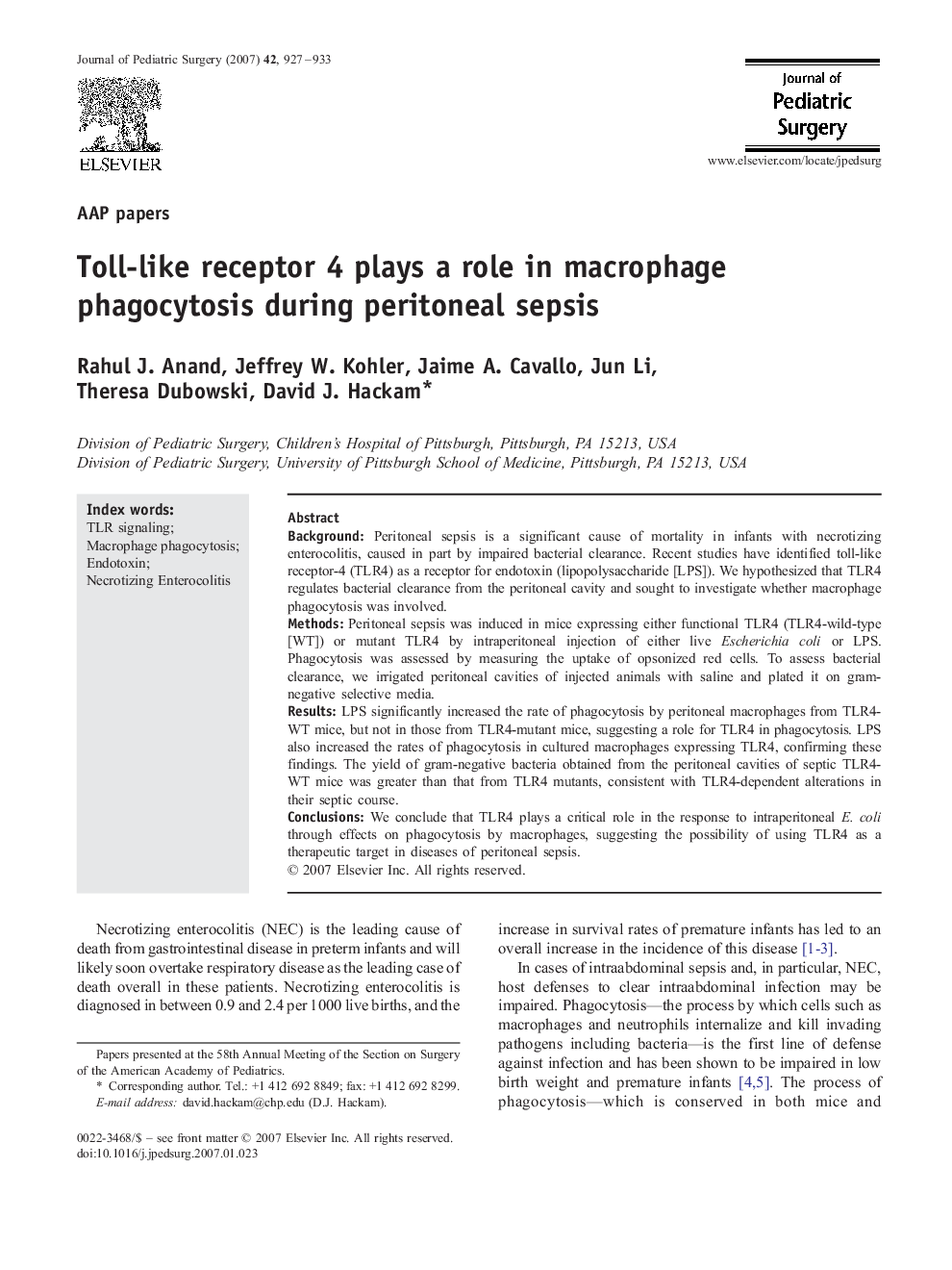| Article ID | Journal | Published Year | Pages | File Type |
|---|---|---|---|---|
| 4159520 | Journal of Pediatric Surgery | 2007 | 7 Pages |
BackgroundPeritoneal sepsis is a significant cause of mortality in infants with necrotizing enterocolitis, caused in part by impaired bacterial clearance. Recent studies have identified toll-like receptor-4 (TLR4) as a receptor for endotoxin (lipopolysaccharide [LPS]). We hypothesized that TLR4 regulates bacterial clearance from the peritoneal cavity and sought to investigate whether macrophage phagocytosis was involved.MethodsPeritoneal sepsis was induced in mice expressing either functional TLR4 (TLR4-wild-type [WT]) or mutant TLR4 by intraperitoneal injection of either live Escherichia coli or LPS. Phagocytosis was assessed by measuring the uptake of opsonized red cells. To assess bacterial clearance, we irrigated peritoneal cavities of injected animals with saline and plated it on gram-negative selective media.ResultsLPS significantly increased the rate of phagocytosis by peritoneal macrophages from TLR4-WT mice, but not in those from TLR4-mutant mice, suggesting a role for TLR4 in phagocytosis. LPS also increased the rates of phagocytosis in cultured macrophages expressing TLR4, confirming these findings. The yield of gram-negative bacteria obtained from the peritoneal cavities of septic TLR4-WT mice was greater than that from TLR4 mutants, consistent with TLR4-dependent alterations in their septic course.ConclusionsWe conclude that TLR4 plays a critical role in the response to intraperitoneal E. coli through effects on phagocytosis by macrophages, suggesting the possibility of using TLR4 as a therapeutic target in diseases of peritoneal sepsis.
